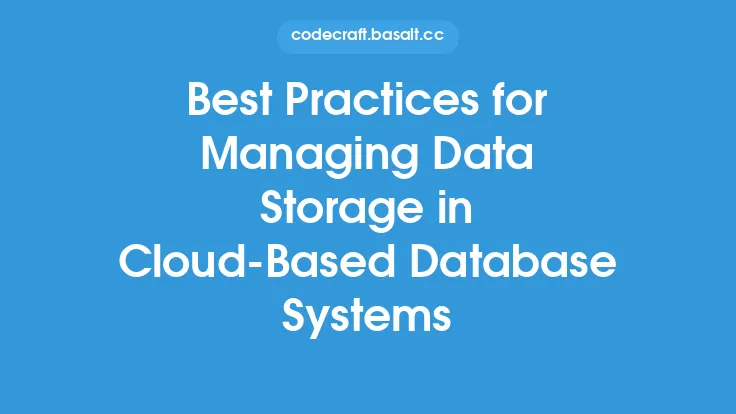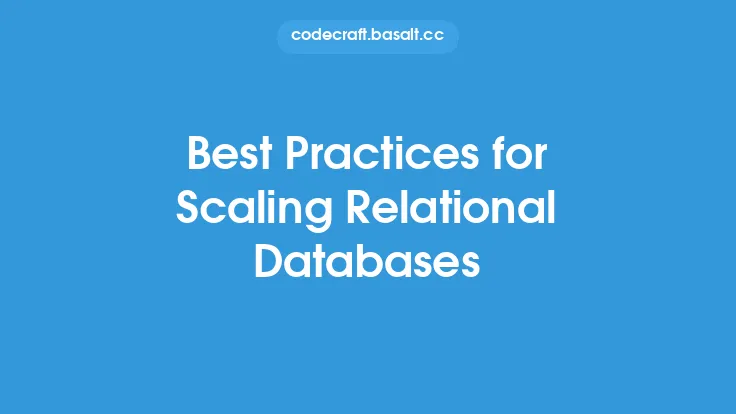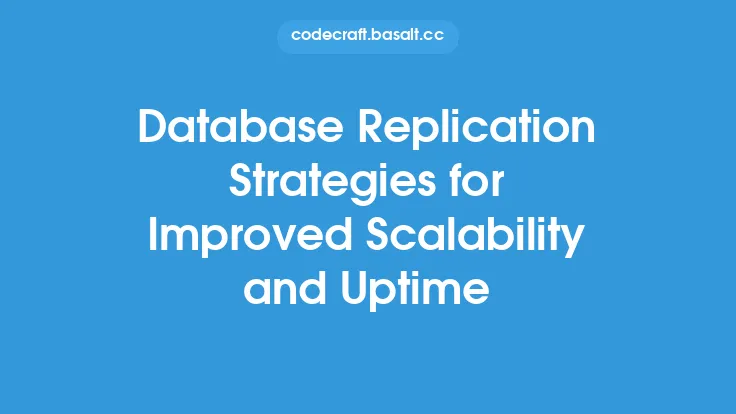When it comes to designing and implementing database systems, one of the key considerations is ensuring high availability. This means that the database system should be able to handle a large volume of requests and data without experiencing downtime or significant performance degradation. Scaling database systems for high availability is crucial for businesses and organizations that rely on their databases to operate efficiently and effectively. In this article, we will explore the concepts and strategies involved in scaling database systems for high availability.
Introduction to Database Scalability
Database scalability refers to the ability of a database system to handle increased load and data volume without compromising performance. There are two types of scalability: vertical scalability and horizontal scalability. Vertical scalability involves increasing the power of a single server or node, such as adding more CPU, memory, or storage. Horizontal scalability, on the other hand, involves adding more servers or nodes to the system to distribute the load. Both types of scalability are important for achieving high availability in database systems.
Understanding High Availability
High availability refers to the ability of a system to operate continuously without interruption. In the context of database systems, high availability means that the system should be able to handle requests and queries without experiencing downtime or significant performance degradation. High availability is critical for businesses and organizations that rely on their databases to operate efficiently and effectively. Downtime or performance issues can result in lost revenue, damaged reputation, and decreased customer satisfaction.
Designing for High Availability
Designing a database system for high availability requires careful consideration of several factors, including hardware, software, and network infrastructure. One key strategy is to use redundant components, such as duplicate servers, storage systems, and network connections. This ensures that if one component fails, the system can continue to operate without interruption. Another strategy is to use load balancing, which involves distributing incoming requests across multiple servers to prevent any one server from becoming overwhelmed.
Database Clustering
Database clustering is a technique used to achieve high availability in database systems. Clustering involves grouping multiple servers together to form a single system that can handle requests and queries. Each server in the cluster is called a node, and nodes can be added or removed as needed to scale the system. Clustering provides several benefits, including improved performance, increased availability, and simplified maintenance. There are several types of clustering, including shared-disk clustering, shared-nothing clustering, and mixed-mode clustering.
Distributed Database Systems
Distributed database systems are designed to store and manage data across multiple servers or nodes. These systems are ideal for large-scale applications that require high availability and scalability. Distributed database systems can be designed using various architectures, including master-slave replication, peer-to-peer replication, and multi-master replication. Each architecture has its own advantages and disadvantages, and the choice of architecture depends on the specific requirements of the application.
Replication and Failover
Replication and failover are critical components of high-availability database systems. Replication involves duplicating data across multiple servers or nodes to ensure that data is always available, even in the event of a failure. Failover involves automatically switching to a backup server or node in the event of a failure. There are several types of replication, including synchronous replication, asynchronous replication, and semi-synchronous replication. Each type of replication has its own advantages and disadvantages, and the choice of replication strategy depends on the specific requirements of the application.
Monitoring and Maintenance
Monitoring and maintenance are critical for ensuring high availability in database systems. Monitoring involves tracking system performance and detecting potential issues before they become critical. Maintenance involves performing routine tasks, such as backups, updates, and repairs, to ensure that the system operates efficiently and effectively. There are several tools and techniques available for monitoring and maintaining database systems, including logging, alerting, and automation.
Conclusion
Scaling database systems for high availability is a complex task that requires careful consideration of several factors, including hardware, software, and network infrastructure. By designing systems with redundant components, load balancing, clustering, and replication, businesses and organizations can ensure that their databases operate efficiently and effectively, even in the face of increased load and data volume. Additionally, monitoring and maintenance are critical for detecting potential issues and performing routine tasks to ensure system availability. By following these strategies and best practices, businesses and organizations can ensure that their database systems are highly available and scalable, providing a solid foundation for their operations.





